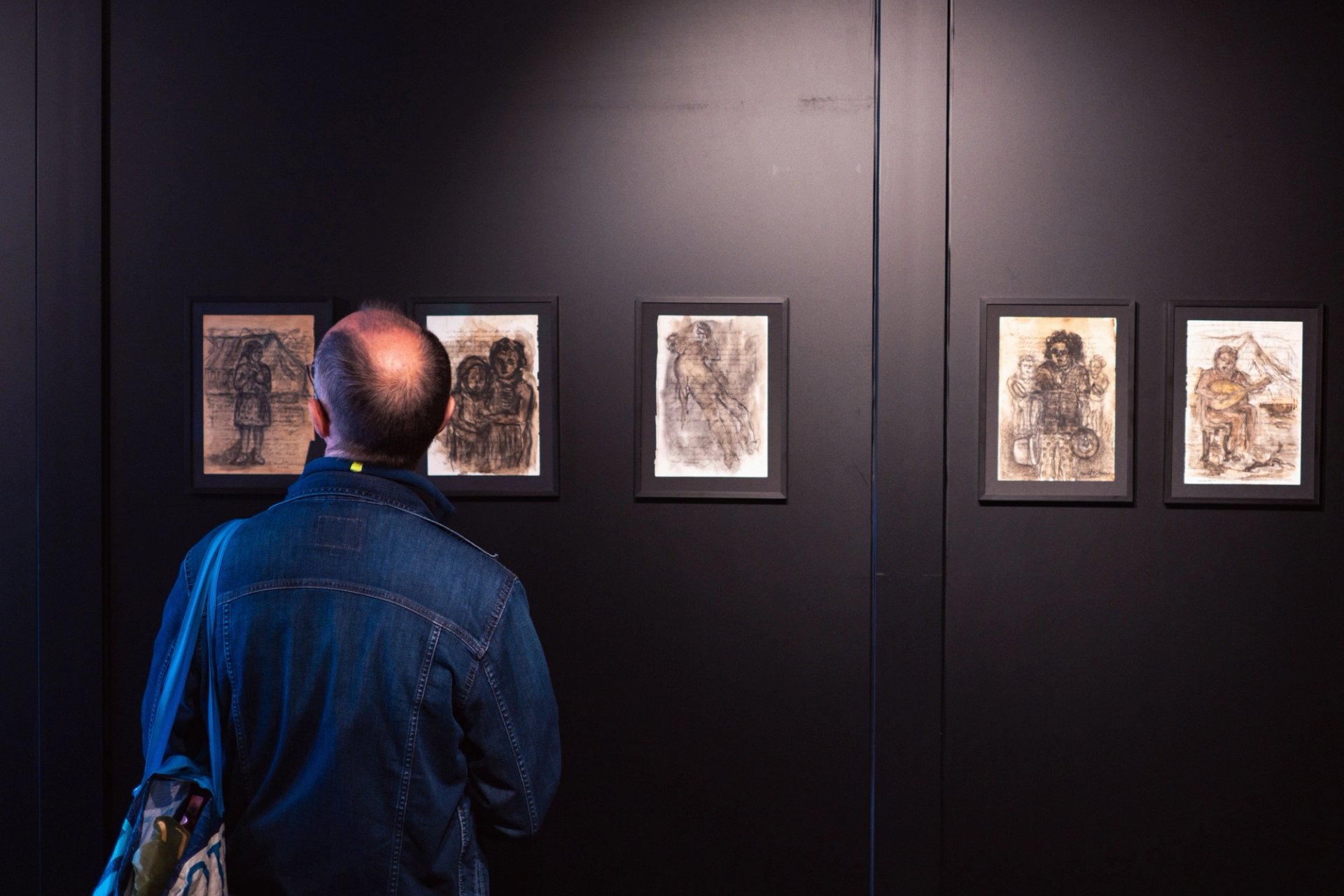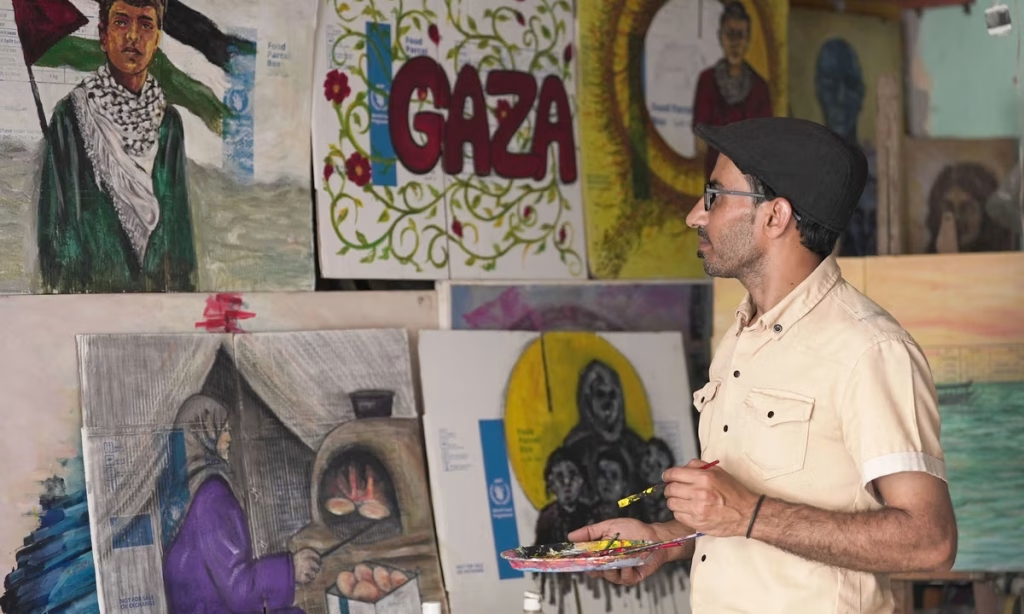The United Nations World Food Programme (WFP) has launched a travelling exhibition of paintings by the Gazan artist Ahmed Muhanna, who uses humanitarian aid boxes as his canvas. Gaza: Stories of Hope and Resilience, featuring more than 40 works, opened on 15 September in Brussels and will tour nine European cities before closing on 23 October.
Alia Zaki, a WFP communication consultant, tells The Art Newspaper that the idea for the exhibition came when colleagues saw one of Muhanna’s works, painted on a WFP aid box, around a year ago. “At the time those parcels and the food that WFP was providing was more or less the only way that people in Gaza had access to food,” says Zaki from Copenhagen, where the exhibition is currently showing.
WFP, the world’s largest humanitarian organisation, contacted Muhanna, and the artist explained that due to a lack of art material he had decided to try working with the boxes.
“It was something that was born out of necessity, but it was also very powerful, because this parcel has become a symbol for the people in Gaza—of the war—and the hardships that they are going through,” Zaki says.
Over three intense months, often under the constant threat of bombings, Muhanna created 40 paintings on WFP aid boxes and more than 20 pieces on paper for the show, capturing the harsh realities around him: displacement, famine and queues for water. “Every time I picked up the brush, the shelling would shake the walls around me. Sometimes I painted by candlelight,” Muhanna tells The Art Newspaper, adding, “but art was my small window to breathe, my only space to hold on to my humanity.”
A view of the Gaza: Stories of Hope and Resilience exhibition in Brussels
Photo: The United Nations World Food Programme (WFP)
He has collaborated with WFP teams in Gaza and Belgium on the show. The project has been made possible with funding from the EU, which since the war began in October 2023, has contributed €86 million to WFP.
For the artist, seeing his work travel beyond Gaza has been deeply emotional. “I feel as though I’m sending a piece of Gaza to the world. These works aren’t just colours, they are living messages that carry our pain, our resilience, and our small dreams for peace and freedom,” he says. “It’s my way of saying: ‘We are here… we are still alive, and we still dream.’”
Muhanna adds that he hopes it will go beyond politics and show outsiders “the artists, the children, the mothers” in Gaza.
The exhibition has already drawn thousands of visitors on its opening stops in Belgium and Sweden. “A lot of people have said that they have known about what’s happening in Gaza but they’ve never felt as close to it as when they see Ahmad’s art,” she says. When possible, the organisers connect Muhanna with visitors via video call, adding another dimension to the connection and helping to close the gap between Gaza and people in Europe.

A visitor views the exhibition in Brussels
Photo: The United Nations World Food Programme (WFP)
A WFP statement says, “the exhibition comes at a pivotal moment in the crisis. Famine has been confirmed in Gaza City, and is expected to spread across Gaza if conditions remain the same. Nearly two years of conflict and devastation have caused unimaginable suffering in Gaza, leaving the entire population in urgent need of humanitarian assistance.”
The statement goes on to say WFP continues to deliver food convoys to Gaza whenever access allows and the organisation and its partners are ready to further scale up operations.
The show is taking place amid an ongoing Israeli ground offensive that began in August in Gaza City, which has displaced hundreds of thousands of Palestinians, and shortly after a new 20-point peace plan was unveiled by the US President Donald Trump. The plan calls for an immediate ceasefire, the exchange of hostages held by Hamas for Palestinians held by Israel, a staged Israeli withdrawal from Gaza, Hamas disarmament and a transitional government led by an international body. A previous ceasefire, put in place in January 2025, collapsed two months later when Israel broke the agreement and launched a surprise attack.
Muhanna remains sceptical about the latest peace plan, telling The Art Newspaper in a message: “We no longer believe anyone. We have been let down by everyone.”
